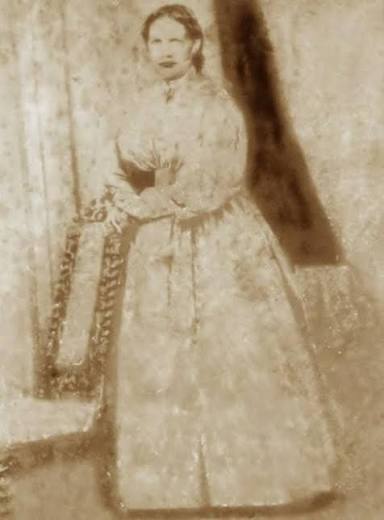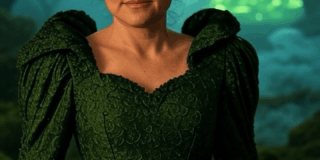
Introduction
Mary Ann Bugg, born on May 7, 1834, near Gloucester in New South Wales, Australia, stands as a compelling figure in the annals of Australian history. As a Worimi woman of mixed Indigenous and European descent, she defied the rigid societal expectations of her era, emerging as one of the few documented female bushrangers in mid-19th-century Australia. Her life intertwined with that of the infamous bushranger Frederick Ward, better known as Captain Thunderbolt, but Bugg’s story transcends this association. She was a resilient survivor, a devoted mother to as many as fifteen children, a skilled navigator of the harsh Australian bush, and a symbol of Indigenous resistance against colonial oppression. Her Aboriginal heritage, often marginalised in historical accounts, played a pivotal role in her ability to evade authorities and support her partner’s escapades for over six years – the longest tenure of any bushranger in New South Wales history.
Bugg’s narrative is one of erasure and reclamation. While Captain Thunderbolt has been immortalised in statues, highways, and folklore as a romantic outlaw, Bugg has frequently been reduced to a mere footnote, her contributions overshadowed by myths and misconceptions. Contemporary scholars and descendants have worked tirelessly to restore her place in history, highlighting her as a Birrpai warrior who bridged Indigenous knowledge with colonial realities. This essay explores her life in depth, from her early years marked by frontier conflicts to her bushranging adventures, later quiet existence, and lasting legacy. By delving into her Indigenous roots and the intersections of her identity, we uncover a fuller portrait of a woman who embodied defiance, adaptability, and cultural resilience in a time of profound upheaval.
The mid-19th century in Australia was a period of rapid colonial expansion, gold rushes, and violent clashes between settlers and Indigenous peoples. The Worimi lands, stretching along the mid-north coast of New South Wales, including areas around Gloucester and the Manning River, were traditional custodians’ territories rich in coastal and riverine resources. European encroachment disrupted these communities, leading to resistance and adaptation strategies that Bugg would later exemplify. Her story not only illuminates personal triumphs and trials but also reflects broader themes of racial intermingling, gender roles, and the bushranger mythos that has shaped Australian national identity. Through a detailed examination of her life, we see how Bugg navigated these complexities, using her heritage as a tool for survival and subversion.
Early Life and Family Background
Mary Ann Bugg’s early life unfolded against the backdrop of colonial Australia’s frontier, where convict labour and Indigenous dispossession intersected. She was the eldest of eight children born to Charlotte, a Birrpai Aboriginal woman from the Worimi people, and James Bugg, a convict transported from Essex, England, in 1826 for theft. James had been sentenced to death but reprieved to life transportation aboard the Sesostris, arriving in Sydney and assigned as a shepherd to the Australian Agricultural Company (AACo) at their Berrico outstation. By 1829, he had risen to overseer, managing the remote station where Mary Ann was born in 1834.
The family lived amid escalating tensions in the upper Williams River district, as European settlers encroached on Indigenous lands, sparking conflicts. James and Charlotte’s relationship was consensual and enduring, contrasting with the often exploitative interactions between convicts and Aboriginal women. They had seven more children: John (1836), Eliza (c. 1839), William (1841), James (1843), Jane (1845), Elizabeth (1847), and Thomas (1850). Mary Ann and her brother John were baptized in 1839 by the AACo’s chaplain, Reverend William Macquarie Cowper.
In 1837, colonial policies threatened to separate convicts from Indigenous partners, prompting James to seek education for his children to “elevate them above the Barbarism of her Tribe,” as he wrote to authorities. In 1839, at around four or five years old, Mary Ann and John were sent to Sydney. While records suggest they were intended for the Orphan School in Parramatta, they attended another institution where Mary Ann learned literacy, numeracy, and domestic skills – opportunities rare for an Aboriginal child. This education alienated her from peers upon her return to Berrico around age ten but equipped her with tools that would later aid in petitions and misinformation campaigns against authorities.
Growing up on the Berrico outstation, Mary Ann was immersed in a hybrid world. Her father’s convict background and overseer role exposed her to colonial structures, while her mother’s Worimi heritage imparted knowledge of the land, survival techniques, and cultural practices. Charlotte taught her bush navigation, tracking, foraging, and horsemanship, skills honed in the Worimi’s coastal and forested environments. These abilities, rooted in Indigenous stewardship and kinship systems, became invaluable during her bushranging years.
The family’s stability was precarious. James received a ticket-of-leave in 1834, allowing self-employment within the district, but he remained with the AACo. By 1848, he and Charlotte formalised their union in marriage, reflecting a commitment amid societal prejudices against mixed relationships. Mary Ann’s childhood thus blended affection with the harsh realities of colonialism, including threats of child removal and racial discrimination. These experiences forged her resilience, preparing her for a life of constant adaptation.
Indigenous Heritage and Cultural Intersections
Mary Ann Bugg’s Worimi heritage was not merely a facet of her identity, but a foundational element that influenced every aspect of her life. The Worimi people, traditional custodians of lands from the Hunter River to the Manning River, maintained a rich cultural heritage tied to the sea, rivers, and bush. Their traditions emphasised kinship, oral histories, spiritual connections to Country, and sustainable resource use. Charlotte, as a Birrpai woman, passed on these elements to her daughter, instilling a deep understanding of the land that contrasted with colonial exploitation.
In the 1830s and 1840s, the Worimi faced devastating impacts from colonisation: disease, displacement, and violence reduced their populations and disrupted communities. Frontier wars in the region saw Aboriginal resistance met with reprisals, creating a volatile environment for mixed families like the Buggs. James’s role with the AACo placed them at the interface of these worlds, where Indigenous knowledge aided pastoral operations, but racial hierarchies prevailed.
Mary Ann’s separation for education highlighted colonial assimilation efforts. Authorities viewed Aboriginal children as salvageable through “civilisation,” often removing them from families, a precursor to later Stolen Generations policies. Her time in Sydney exposed her to European norms, creating a cultural duality. Upon returning, she reintegrated into Worimi practices, learning to navigate the bush with acute senses: placing her ear to the ground to detect approaching horses, identifying edible plants, and forging alliances with Indigenous clans.
This heritage manifested in her later resistance. As a “half-caste” woman, a term used derogatorily in contemporary reports – she faced double discrimination: racial prejudice and gender constraints. Yet, she leveraged her Indigenous skills to outmanoeuvre police, collaborating with Kamilaroi and other groups who provided shelter in exchange for shared resources. These alliances reflected broader Indigenous strategies against dispossession, positioning bushrangers like Thunderbolt as allies to the marginalised.
In her later years, Bugg may have claimed Maori ancestry to obscure her Worimi roots, evading government surveillance and assimilation policies that targeted Aboriginal families for removal to reserves. This adaptive tactic underscores the protective measures Indigenous people employed. Today, descendants like Birrpai Traditional Owner John Heath honour her as a “stoic Birrpai warrior,” reclaiming her story from erasure. Her heritage thus represents a bridge between worlds, challenging narratives that sideline Aboriginal contributions to Australian history.
Marriages and Early Relationships
Mary Ann Bugg’s adult life began prematurely, shaped by the economic and social pressures of colonial Australia. At just fourteen, on June 1, 1848, she married Edmund Baker, a former convict and miner, in Stroud. This union, common in an era of limited options for women, especially those of mixed heritage, may have produced a daughter named Helena, though records are uncertain. The marriage dissolved quickly, possibly due to Baker’s death or departure during the 1850s gold rushes, leaving Bugg to navigate independence.
By the early 1850s, she partnered with John Burrows, moving to the Bathurst district amid the Turon River gold rush of 1851. They had two sons: James in 1851 and John in 1853. Settling in the Mudgee area, Bugg managed domestic life in a booming frontier town, where gold fever brought prosperity and peril. By mid-1855, she separated from Burrows and began a relationship with James McNally, an ex-soldier and farmer at Cooyal, north of Mudgee. With him, she bore three children: Mary Jane (1856), Patrick Christopher (1857), and Ellen (1860).
These partnerships reflect the transient nature of colonial existence, where women like Bugg sought stability amid uncertainty. As a mother, she prioritised her children’s welfare, often leaving them with relatives during turbulent times. Her relationships also highlight her adaptability, moving between rural outposts and drawing on her skills to support households. By 1860, at McNally’s farm, she met Frederick Ward, a ticket-of-leave convict, marking a turning point that propelled her into bushranging.
Bugg’s early unions produced at least six children before Ward, underscoring her role as a prolific mother in an age without welfare support. These years honed her resilience, preparing her for the challenges ahead. Her ability to form alliances across social strata, convicts, soldiers, farmers, mirrored her cultural duality, blending Indigenous communal values with colonial pragmatism.
Meeting Frederick Ward and the Beginning of Bushranging
In 1860, Mary Ann Bugg’s life intersected with Frederick Ward’s at Cooyal, where he worked as a ticket-of-leave convict. Their attraction was swift; Bugg soon became pregnant with their first child, Marina Emily, born in late 1861 at her father’s farm in Monkerai. Ward’s accompaniment violated his parole, requiring him to stay in Mudgee and attend musters. When he arrived late for a muster on a horse later claimed stolen (though the owner admitted it had strayed), his ticket was revoked, and he was imprisoned on Cockatoo Island to serve remaining time plus additional years.
Myths surround Ward’s 1863 escape from the island prison – one of few successful breakouts. Popular tales credit Bugg with swimming shark-infested waters to deliver tools and guiding him with a lamp. However, evidence suggests she remained in Dungog or Sydney, supporting her children through domestic work, reuniting with him post-escape. Regardless, their partnership solidified as Ward adopted the alias Captain Thunderbolt after a dramatic robbery in December 1863.
Together, they fled through the mountains west of Gloucester during the 1864 Great Flood, reaching the Culgoa River where Ward’s brother William lived. They resided quietly until 1865, when Ward robbed with accomplices near Collarenebri. Bugg bore another daughter, Elizabeth Ann, that year but left her with kin to remain mobile. Their life on the run spanned vast territories, from Newcastle to Queensland and Narrabri to Bourke.
Life on the Run: Bushranging Activities
As Captain Thunderbolt’s companion, Mary Ann Bugg played an indispensable role, her Indigenous expertise enabling his prolonged evasion. Dressed in men’s attire, moleskin trousers, boots, Crimean shirt, monkey jacket, and cabbage tree hat, she rode astride, scouting towns for police, managing camps, foraging, and hamstringing cattle for sustenance. Her acute hearing and tracking skills, learned from her mother, saved them repeatedly; she detected approaching threats by ear to the ground.
Bugg taught the illiterate Ward to read and write, nursed his wounds – including after a shooting – and spread false leads to authorities. She forged ties with Indigenous clans like the Kamilaroi, exchanging loot for shelter, embodying reciprocal relationships amid shared oppression. While never charged with robberies, public perception cast her as an active participant, dubbing her the “Captain’s Lady” or “Lady Bushranger.”
Their exploits included hold-ups of travellers, stations, pubs, and stores, amassing notoriety. In 1865, heavily pregnant, Bugg fiercely resisted a police raid, tearing an officer’s uniform and challenging them, showcasing her warrior spirit. She bore Frederick Wordsworth in 1868, but dangers mounted, leading to their separation around 1867-1868.
Bugg’s contributions extended beyond survival; her literacy allowed petitions for release and strategic deceptions. Her presence humanized Thunderbolt, portraying him as a family man rather than a lone outlaw, influencing public sympathy.
Arrests and Legal Battles
Despite her caution, Bugg faced three arrests, targeted indirectly to lure Ward. In 1866, convicted of vagrancy and sentenced to six months in Maitland Gaol, public outcry and legal scrutiny revealed flawed charges, leading to her release after two weeks. In 1867, arrested for stolen goods, she served three months but was freed early after proving purchases with a self-written petition, her education proving crucial.
These incidents highlight colonial authorities’ tactics against associates of bushrangers, using vagrancy laws to detain without direct evidence. Bugg’s defiance in court, eloquent and unyielding, earned admiration, with shopkeepers vouching for her character. Her releases underscored injustices in the system, fuelling debates on Aboriginal rights and women’s treatment.
Separation from Ward and Later Life
Contrary to 1867 reports mistaking another woman (Louisa Mason) for her death, Bugg outlived Ward, killed in 1870. Post-separation, she reunited with John Burrows, bearing Ada Gertrude (1870), Ida Margaret (1874), and George Herbert (1880). Living under aliases like Mary Ann Baker or Burrows, she concealed her heritage, possibly claiming Maori identity to avoid scrutiny.
After Burrows’ death before 1900, Bugg worked as a nurse in Mudgee, supporting herself quietly. She died on April 22, 1905, at age 70 from senile decay, remembered by descendants as a resilient figure. Her son Frederick became a horse trainer, dying in 1937.
This phase illustrates her shift from outlaw to ordinary citizen, crafting a narrative to protect her family from stigma.
Legacy and Cultural Representations
Mary Ann Bugg’s legacy endures as a symbol of Indigenous empowerment and gender defiance. While Thunderbolt is celebrated in monuments and tourism, Bugg’s erasure reflects historical biases marginalising Aboriginal women. Scholars like Carol Baxter have debunked myths, emphasising her role in Ward’s success.
Cultural depictions include Natasha Wanganeen’s portrayal in Drunk History Australia and Les Murray’s poem “Maryanne Bugg.” Descendants advocate for recognition, such as monuments in “Thunderbolt Country.” Her story challenges Australia’s folklore, affirming Aboriginal women’s contributions and urging inclusive historical narratives.
Mary Ann Bugg was a multifaceted icon whose life wove Indigenous heritage with colonial rebellion. Her endurance inspires, reminding us of forgotten voices in nation’s past.



